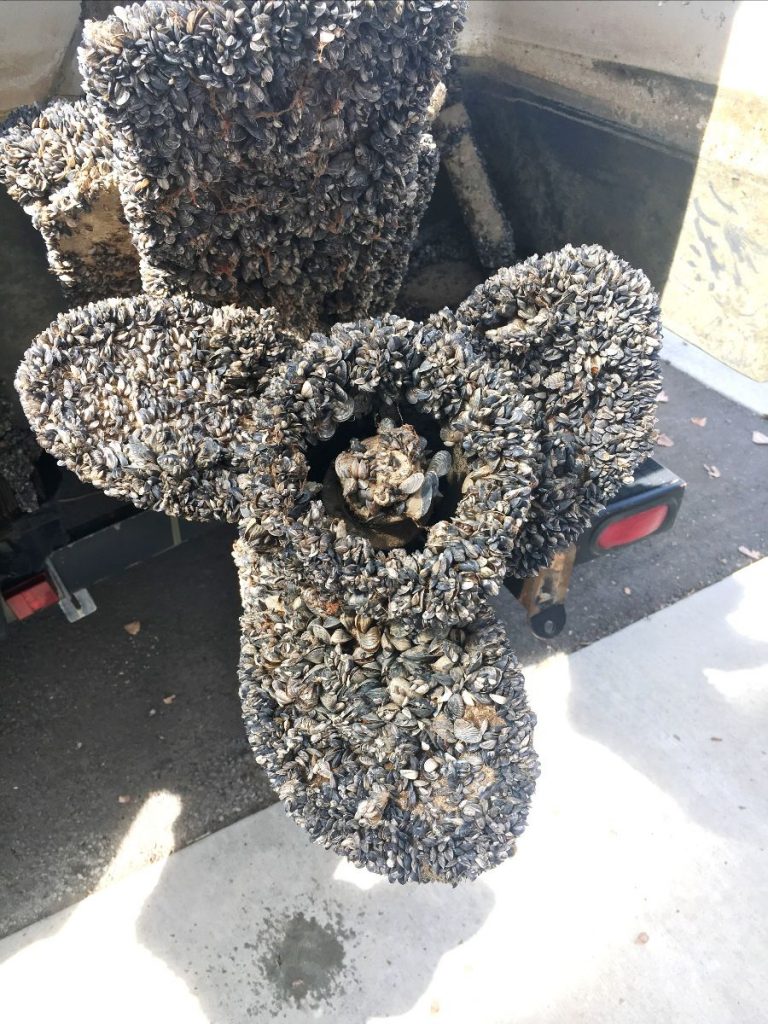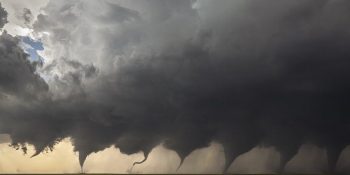DENVER, Colo. – More boats requiring decontamination because of infestations of destructive mussels entered Colorado last year than in 2018, but the statewide inspection program coordinated by Colorado Parks and Wildlife again succeeded in keeping invasive mussels out of the state’s lakes and reservoirs.
While Colorado remains mussel free, CPW officials are concerned that the number of boats entering Colorado that need decontamination continues to increase. CPW will not let down its guard to keep invasive aquatic species out of the state.
“The Colorado Parks and Wildlife’s Aquatic Nuisance Species Program continues to meet the challenge of protecting the state’s water resources and infrastructure from the establishment of Aquatic Nuisance Species,” said Elizabeth Brown, the agency’s invasive species program manager. “Colorado remains free of adult zebra and quagga mussel reproducing populations, while some nearby western states without mandatory inspection programs continue to detect infestations. Colorado has prevented the introduction of this invasive species due to the diligent efforts of watercraft inspection and decontamination, early detection monitoring, education and enforcement efforts.”
Other western states that have mussel infestations include: Arizona, Utah, Kansas, South Dakota, North Dakota, Oklahoma, Texas and California. Where there are infestations, mussels can clog up pipes and important infrastructure, cover docks, shorelines, rocks, any hard surface and can ruin powerboat engines.
Throughout the state last year, 481,543 boat inspections were conducted, 7,000 more than in 2018. A total of 22,947 boats, 281 with attached mussels, were decontaminated, compared with 19,111 in 2018. Unfortunately, the number of intercepted boats fully infested with mussels increased by 40 percent, from 51 in 2018 to 86 in 2019. In 2017, only 16 mussel-infested boats were intercepted.
Brown said she’s very concerned about the substantial increase in infested boats entering the state.

“This growth trend is directly related to the growing threat invasive mussels pose to Colorado’s water infrastructure, natural resources and outdoor recreation. Along with work by our partners, CPW’s Invasive Species Program is critical to maintaining opportunities for recreation, preserving natural heritage and protecting water supply and delivery infrastructure for municipal, industrial and agricultural use,” Brown said.
A fully formed adult zebra or quagga mussel has never been detected in Colorado waters. However, the larval stage of the mussels, known as veligers, were detected as recently as 2017 in Green Mountain Reservoir in Summit County and the reservoir is still considered suspect for quagga mussels. For detection, biologists perform three types of sampling to target the three life stages of mussels. CPW confirms all visual detections with DNA analysis to confirm the genus and species of the mussel. If no additional detections are verified in 2020, Green Mountain Reservoir will be delisted.
In 2019, crews sampled 179 standing, and four flowing waters statewide for veligers. In addition to the sampling efforts performed by CPW, the National Park Service contributed 38 plankton samples. There were no detections of zebra or quagga mussels in Colorado.
CPW works in partnership with dozens of other agencies, counties and municipalities throughout the state. Help from the partners is critical in maintaining a mussel-free Colorado, Brown said.
For more information about CPW’s ANS prevention program, see: https://cpw.state.co.us/thingstodo/Pages/BoatInspection.aspx.
SPREAD THE NEWS
COMMENT, Like, Follow & SHARE @I70Scout
CURRENT EDITION
WEATHER & TRAFFIC PUZZLES RECENT NEWS ADVERTISE WITH US




